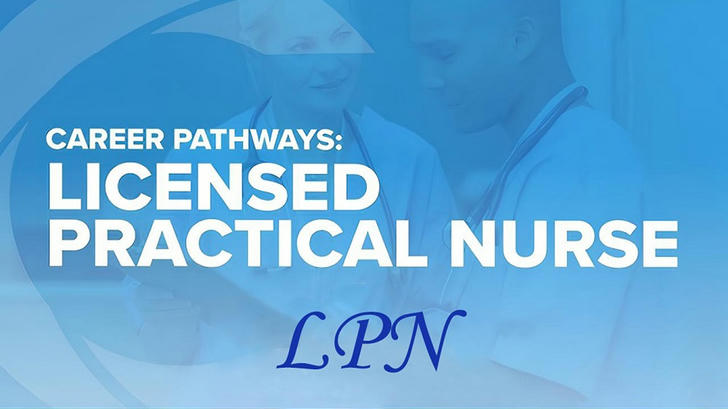The Path to Becoming a Licensed Practical Nurse (LPN) in the United States
Becoming a Licensed Practical Nurse (LPN) is an excellent career choice for those interested in healthcare, offering stability, job satisfaction, and opportunities for growth. LPNs play a critical role in patient care, working under the supervision of Registered Nurses (RNs) and physicians. If you're considering a career as an LPN, it's important to understand the training process, job prospects, and the impact this role has in the healthcare system.

What is an LPN?
A Licensed Practical Nurse (LPN) is a healthcare professional who provides basic nursing care to patients. LPNs assist with daily activities, administer medications, monitor vital signs, and help physicians and RNs with medical procedures. While LPNs cannot perform some of the more advanced tasks that RNs can, they are vital to the healthcare team, offering direct, hands-on care.
LPNs are often the first point of contact for patients in many settings, such as hospitals, nursing homes, and home healthcare environments. Their role is indispensable, and they often form close relationships with patients, offering comfort and support during challenging times.
How to Become an LPN
1. Educational Requirements
The first step in becoming an LPN is completing an accredited LPN program. These programs are typically offered at community colleges, vocational schools, and some hospitals. The programs generally take about one year to complete, depending on whether you attend full-time or part-time. LPN programs combine classroom instruction with clinical experience, allowing students to learn essential nursing skills in both theoretical and practical settings.
Key Courses in LPN Programs Include:
Anatomy and Physiology
Pharmacology
Basic Nursing Skills
Patient Care
Nutrition
Medical Terminology
Mental Health Nursing
An important aspect of LPN training is clinical experience. This allows students to practice their skills in real healthcare settings under the supervision of experienced nurses and medical professionals. Clinical rotations are essential for students to gain a deeper understanding of patient care and how to interact with different types of patients in various healthcare environments.
2. Licensing Exam (NCLEX-PN)
Once you've completed your LPN training, the next step is to pass the National Council Licensure Examination for Practical Nurses (NCLEX-PN). This exam tests the knowledge and skills you’ve acquired during your education and ensures you’re prepared to provide safe and effective care to patients.
The NCLEX-PN covers a wide range of topics, including:
Safe and Effective Care Environment
Health Promotion and Maintenance
Psychosocial Integrity
Physiological Integrity
Preparing for the NCLEX-PN exam can be challenging, but there are many resources available to help you succeed, such as online study guides, practice exams, and preparatory courses.
3. State Licensure
After passing the NCLEX-PN, you'll need to apply for licensure in the state where you plan to work. Each state has its own licensing requirements, but the process typically involves submitting proof of your education, passing the NCLEX-PN, and undergoing a background check.
Some states may have additional requirements, such as continuing education courses, while others may offer reciprocity for LPNs licensed in other states. It’s important to research your state’s specific requirements to ensure you're fully compliant.
4. Job Opportunities and Career Growth
LPNs can find employment in a variety of healthcare settings. Some common job environments for LPNs include:
Hospitals: LPNs in hospitals may work in departments such as pediatrics, geriatrics, and general medicine. They assist in patient care, monitor vital signs, and provide emotional support to patients and families.
Nursing Homes and Long-Term Care Facilities: LPNs play a crucial role in long-term care, providing assistance to elderly patients and those with chronic illnesses. They help with activities of daily living, medication administration, and ensure patients’ overall comfort.
Home Healthcare: Some LPNs work in patients' homes, providing personalized care, monitoring health conditions, and offering rehabilitation assistance.
Outpatient Clinics: LPNs can work in medical offices, providing support in patient care, preparing patients for procedures, and assisting doctors and nurses.
The U.S. Bureau of Labor Statistics (BLS) reports that the demand for LPNs is expected to grow by 9% from 2020 to 2030, which is faster than the average for all occupations. The need for healthcare services, particularly for an aging population, will continue to drive demand for LPNs.
5. Salary Expectations
The salary for an LPN varies based on factors such as location, experience, and work setting. According to the Bureau of Labor Statistics, the median annual wage for LPNs was $50,090 as of May 2022. However, salaries can range from $40,000 to $60,000 per year, depending on the region and type of employment.
For instance, LPNs working in metropolitan areas or specialized settings may earn higher wages. In contrast, rural areas or entry-level positions may offer lower salaries. That said, many LPNs find the job rewarding, not only in terms of financial compensation but also in the fulfillment that comes from providing direct patient care.

6. Advantages of Becoming an LPN
There are several advantages to pursuing a career as an LPN:
Short Training Period: LPN programs are typically one year in duration, making it a quick path to entering the workforce compared to other healthcare careers like Registered Nurses or physicians.
Job Stability: The healthcare industry is growing rapidly, and LPNs are in high demand, ensuring job security for those who enter the field.
Personal Fulfillment: Many LPNs report high job satisfaction because they make a direct impact on patients' lives. Helping individuals recover, improve their quality of life, and navigate challenging health issues can be highly rewarding.
Opportunities for Advancement: While LPNs have a more limited scope of practice compared to RNs, many choose to continue their education to become RNs. LPN-to-RN bridge programs are widely available, allowing LPNs to advance their careers if they choose.
Real-Life Example: Sarah’s Journey to Becoming an LPN
Sarah, a 28-year-old mother of two, decided to pursue a career as an LPN after realizing she had a passion for helping others. She enrolled in a 12-month LPN program at a local community college, balancing her studies with family responsibilities. After completing the program, Sarah passed the NCLEX-PN exam and was licensed as an LPN. Today, she works in a nursing home, providing care to elderly patients, and says, "The job can be tough, but seeing the patients smile and knowing I helped them through difficult times is incredibly rewarding."
Conclusion
Becoming an LPN is a fulfilling and practical choice for those interested in a healthcare career. With relatively short training, a high demand for workers, and the opportunity to make a real difference in patients' lives, LPNs are integral members of the healthcare team. Whether you’re just starting out or looking for a career change, becoming an LPN could be the perfect opportunity for you. With a stable career, solid salary, and the chance to grow professionally, it's an exciting path to consider.
So, are you ready to take the first step toward your future as an LPN? 😊
